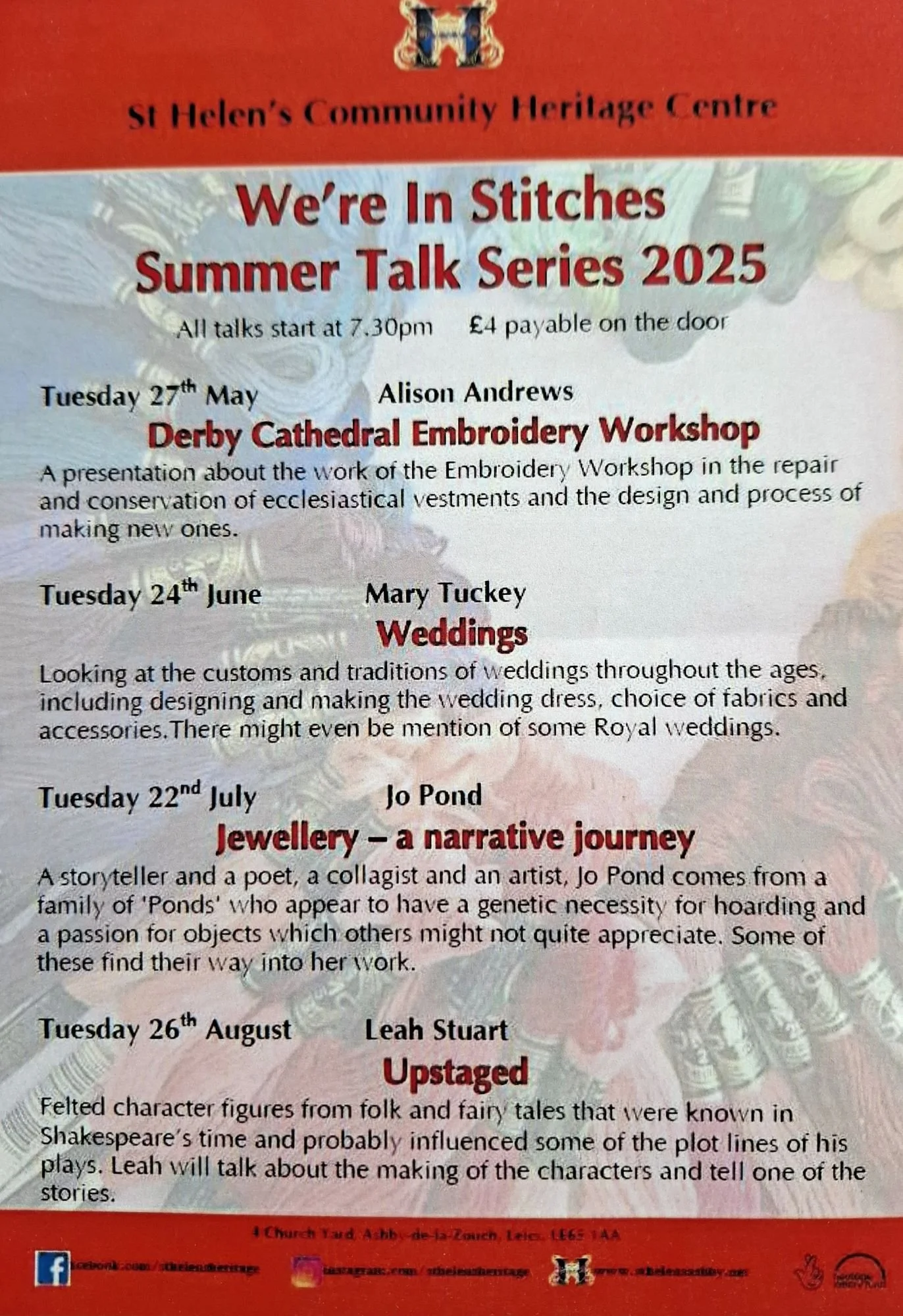What’s in a Story?
An Invitation to Give a Talk
My lovely friend, Mo, helps to organise events for the Heritage Centre connected to her church, St. Helen’s. She asked me some time ago to give a talk about my needle-felted figures. Apparently, it was another friend, Rebekah, who made the suggestion to her. With two gorgeous people asking me, I couldn’t really refuse.
“Upstaged”
My aim is to show some of my figures and their accompanying Story Plot Panels, display the equipment that I use and talk about how I make the figures and the clothes. All of this is covered in my blogs. I’ve committed myself to telling one of the stories these figures are based on at the end.
Festival at the Edge
I’ve recently been to Festival at the Edge, which is a storytelling festival. Myself and my husband were treated to stories told by some truly fantastic storytellers; Peter Chand and Daniel Morden, being two of our favourites. I don’t tell stories myself, but I absolutely love listening to an all engrossing tale.
It was while I was waiting outside the campsite shower block, that Peter Chand queued behind me. We began discussing how to explain oral storytelling to people who have never experienced it. Usually, when I mention I’m going to a Storytelling Festival, I either get blank looks or it is assumed that I’m taking small children with me. For this blog, I’ll try and share some of my experiences of telling and some of the storytellers I enjoy listening to.
Oral Storytelling
My first experience of oral storytelling was at teacher training college. Our group was divided into three. Each group was told a simple story that the other two groups were not aware of. We all returned to the hall and were put into a group of three. Each member knew a different story to the others. Armed with washing lines, pegs and sheets, we were asked to create a “nook”; an enclosed shelter where all three of us could sit and tell each other the story we knew. It was magical and I’ve loved it ever since. Yes, learning about storytelling was to show us it’s importance for children’s education. It is much more than that. It is a form of entertainment, passing on cultural values and history and even emotional healing that took place before the written word and the fragmenting of community.
At the festival, the stories are told inside a marque. The storyteller usually stands on a platform, not too high as they want to keep eye contact with every person listening. There are courtesy rules, no recording, turn phones off and you don’t enter or leave the marque when a story has begun. This is because these can be quite distracting to the teller and the listeners. With this intimate space created, if a teller has heard their story from another teller, they will acknowledge them before they begin. The teller will begin their tale. With voice, gesture, maybe song or music, the listener is taken on a story journey. The teller creates the scenes for your imagination to work with; like watching your own internal film. The difference being that unlike a film, the teller can adapt the story by skillfully responding to the audiences reactions. I guess, even going to the theatre, the cast are restricted to the script, despite their connection with the audience. A teller knows the story but it is not retold word for word each time. I’ve recently admired the skill of Peter Chand, who, just as he stood up to tell a story, had an entire audience distracted by the thunder, lightning and torrential downpour of a storm outside. What did he do? He chose a story about water and incorporated the sounds from outside.
Three Storytellers
Following the European, rule of three; three bears, three wishes, three siblings, I’d like to introduce you to three storytellers. It is well worth visiting their websites or going to hear them if you get the opportunity.
Peter Chand (https://peterchand.com)
As a British Punjabi Storyteller, Peter, has a wealth of tales from India and other countries. He tells with such a wonderful sense of humour and enchanting music. He is also on Facebook and Instagram but if you’d like to listen to him try YouTube.
Daniel Morden (https://danielmorden.org)
He is a Welsh storyteller and collector of stories, having published many of the traditional stories he tells. He has many YouTube videos that are well worth finding.
Shonaleigh Cumbers (http://shonaleigh.uk)
She is a drut’syla, a storyteller of Jewish traditional tales. She was learning these tales from the age of four, passed on to her from her grandmother. Again, there are some YouTube videos to get a taster of the enormous collection of tales she tells.
As I mentioned earlier, at the end of my talk in August, I’ll be telling one of the stories from the “Upstaged” collection. |I don’t tell stories so I’m working on remembering the order by reducing the plot to five stages. One stage for each finger on one hand. I’m concentrating on imagining the story in my mind so that I can describe what I see. Using actions and gestures I’ve been told will also help to create these scenes. Let’s hope all goes well!
Thank you for reading my August Blog. Enjoy the wonderful stories of the Three Storytellers.

